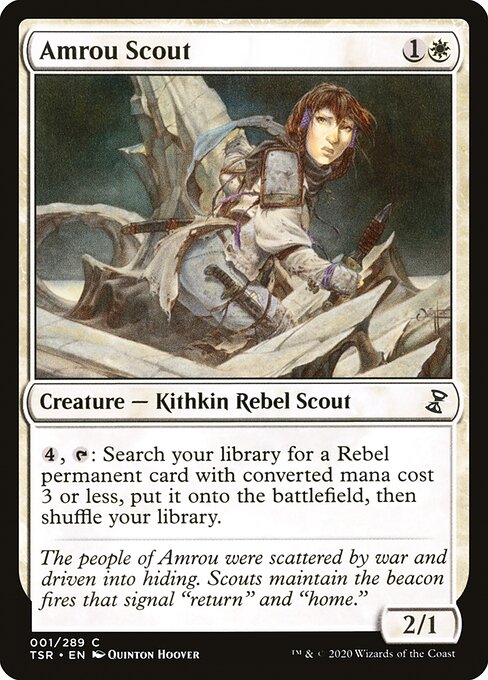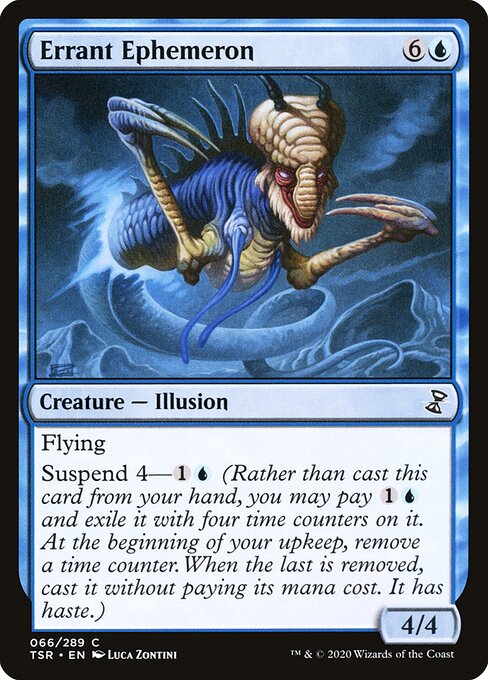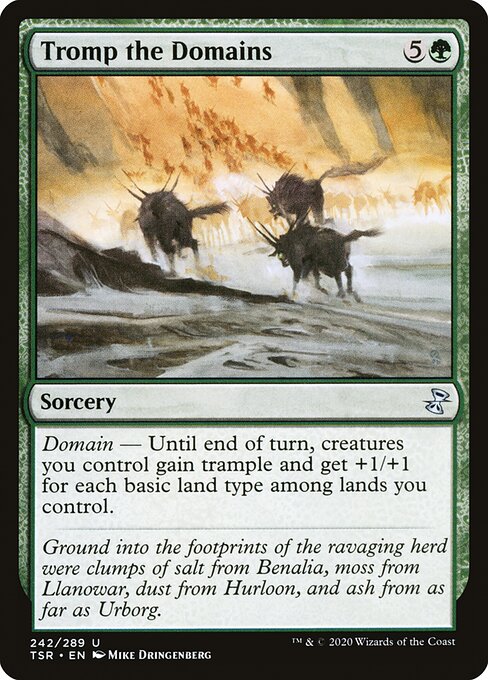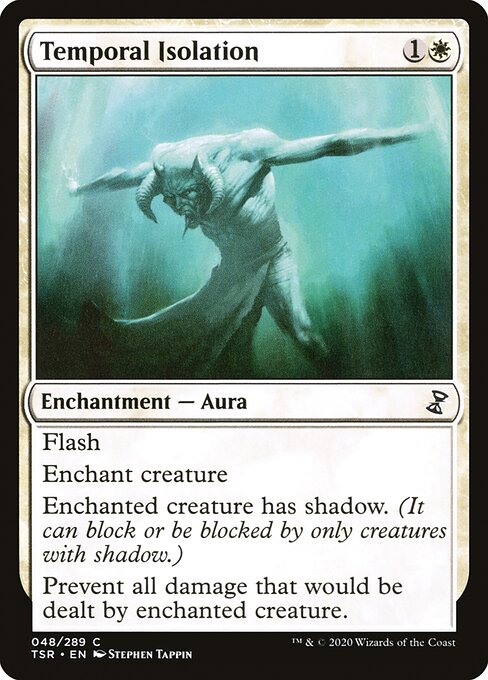The last social thing I did before lockdown last March was steadily drafting my way through two boxes of Mystery Boosters and a case of local microbrews with three friends. Revisiting old favorites in new contexts is my favorite part of Magic, and Wizards has, over the last three years, consistently delivered products that curate a deep Limited experience with the admixture of serious nostalgia. Modern Horizons was havoc for Modern, but an extremely fun draft environment, and both Mystery Booster and Time Spiral Remastered are too huge to experience in a few drafts alone.
This is why I’m sanguine about Universes Beyond—so long as we keep getting nostalgia sets for the hyper-enfranchised, let them print as many Transformers and Godzillas as they please. I’m not excited to play against a stranger’s Gandalf the White Commander deck, but I’ve also never been excited to play against Animar, Soul of Elements. Maybe it’s just because I’m riding high off of Time Spiral Remastered—the combination of spring weather, encouraging vaccination news, and cards I haven’t seen since they rotated out thirteen years ago has frankly made me feel better than I have since that last March day.

Original Time Spiral came out when I was studying abroad in London. My Tuesday night tradition was heading to a hotel bar where twenty pounds got you a draft and two pints of decent cider; forty pounds got you two drafts and five pints if you didn’t have anywhere to be. I got pretty decent at what was a rich (albeit somewhat random) format—or at least I thought I got decent. I may just have lucked into opening megabomb Stronghold Overseer. Regardless, I have an abiding fondness for triple Time Spiral. The draft format degraded a bit with Planar Chaos before improving with the wackiness of Future Sight, but triple TS is one of the peaks of Magic Limited. You could easily get there with Rebels, or with a complicated Storm deck, or with Goblins with a Storm finish, or with Icatian Crier plus Fortify, or simply open Stormbind and mulligan aggressively.
Triple Time Spiral was also one of the great mono-colored formats, which Time Spiral Remastered appears to have faithfully maintained. Tendrils of Corruption at common and the existence of Nightshade Assassin make going mono-black attractive, and I always had success with mono-blue Errant Ephemeron builds.

Mono-white without Icatian Crier was less than ideal, but Celestial Crusader brought a huge game if you snatched up the Rebels plus some Sunlances and Ivory Giants. Amrou Scout is the second most important card in the Rebel archetype after Bound in Silence (which you’ll be fighting against every other White drafter for, so it’s first pick material). Saltfield Recluse and Aven Riftwatcher are next in the pick order, both of which can make combat incredibly frustrating for your opponent—particularly when you tutor out Riftwatcher with Amrou Scout mid-combat. Of course, the addition of Black—and most importantly, Blightspeaker—gives Rebels the reach it needs to close out games.
Time Spiral Remastered was designed for extremely enfranchised players—folks who perhaps may not have been around for the first printing, but who have enough experience with the game to scan through the daunting array of abilities and niche roleplayers. It brings back one of Early Magic’s downfalls: excessively complicated combat. Combat was a much dicey proposition back in the days of Samite Healers, morphs that prevented damage, and mid-combat Interrupts.
In Time Spiral Remastered, Deathspore Thallid, morph, Pallid Mycoderm, Saltfield Recluse, Lymph Sliver, Stonecloaker, Rebels, and a comical number of cheap tricks mean that autopiloting through combat will lose you games once again. It’ll be an adjustment, but a welcome change—I’m tired of games where the only question before swinging is “can they pay for Aspect of Manticore?” That said, the first time a tapped-out opponent unmorphs Gathan Raiders to eat your Baloth will be extremely frustrating. “Raiders at common,” while true to the original block, sums up the higher power and deeper strategy of the format—the set is loaded down with hugely powerful cards at lower rarities.

For example, the blue Volcanic Dragon, Errant Ephemeron, is still at common and still the best. The value of suspending it on turn two and forcing your opponent to hold back removal while you hit them with less threatening cards becomes its own mini-game. Suspend seems like it offers too much information to your opponent in exchange for a minor mana discount, but trust me: if your deck is well-built, all it does is demoralize your opponent.
Momentary Blink returns, but its targets are few and far between and it loses some of its old power now that damage no longer uses the stack. It’s still a great card, but your best in-color rebuys are Aven Riftwatcher, Ivory Giant, and Cryptic Annelid. If you’re lucky enough to get an Akroma or other spicy Morph, it goes up in value, but mostly you’ll use it reactively to invalidate removal.

Empty the Warrens Storm is possible—Coal Stoker becomes one of the most crucial cards in that archetype (and even slightly improves, as old Time Spiral still employed the mana burn rule). Grinning Ignus helps out, but it’s possible to draft a solid red-based aggressive deck full of Mogg War Marshal and Dead // Gone, with “value” Grapeshot for three or four to close out games.
Time Spiral was so interesting because the archetypes were fluid—Rebels sought out Blightspeaker, but so did random Black decks. Blightspeaker searching out Blightspeaker was a common line of play, even without other Rebels, and Deathspore Thallid by its lonesome is still potent. One of the less-respected archetypes was Thallids—they read poorly, and came off as slow and clunky, but Deathspore Thallid was absolutely incredible—again, with damage on the stack, allowing your Saprolings to team up to take down 4/4’s with ease. Even now it remains excellent; a few Thallid Shell-Dwellers, which are superb at gumming up the ground, and Sporesower if you’re lucky, can lead to a grindingly inevitable victory that feels flavorful.
My top common picks are:
Errant Ephemeron, Bound in Silence, Strangling Soot, Tendrils of Corruption*, Durkwood Baloth, Foresee, Dark Withering, Dead // Gone, Sunlance
*goes up to first in mono-Black, down a bit if Black is the supporting color
And my top uncommon picks:
Tromp the Domains, Firemaw Kavu, Sudden Death, Lightning Axe, Griffin Guide

Tromp the Domains is an absurd Overrun, but without Search for Tomorrow to power your domain, Greenseeker becomes more important. It’s still a bomb, but requires more setup than before.
Above all, though, the removal in Time Spiral limited is fast, cheap, and abundant. Temporal Isolation would make the top five in almost any other format, whereas in Time Spiral Remastered, it doesn’t make the list. Sudden Death kills almost everything in the format (and teams up with a Saproling or Thrull to take out Durkwood Baloth), while Strangling Soot is completely unfair as a two-for-one. Sunlance is incredibly efficient, but it’s a tier below the others—sometimes, you’ll need to kill those Stormfront Riders. Tendrils of Corruption is fine enough as an Agonizing Syphon in a dual-colored deck, but in mono-black it takes down Dragons and pulls you out of danger.

A brief encomium to Temporal Isolation: the Pacifism variant is responsible for one of my most instructive losses. On a stalled-out board, with me at four, an opponent swung with a Durkwood Baloth, dropped a Temporal Isolation on it, then Disenchanted it after I was unable to block. These little moments of next-level thinking are what makes these cards—and this game—still intriguing and challenging after decades, and they’re what Time Spiral represents to me.
We haven’t even yet touched the “Timeshifted” cards. While you can never plan for them, since they show up at a rate of one per booster at equal rarity, many original Time Spiral drafts were affected by what showed up at the back of the booster. Time Spiral Remastered’s canniest innovation is cutting the original Timeshifted set—many of which have aged poorly in modern Magic—in favor of a new roster. These cards are, like the originals, a truly motley mix of nostalgic reprints (Kiki-Jiki, Mirror-Breaker & Thragtusk), heavily-played Constructed cards that you wouldn’t prioritize in draft (Chalice of the Void, Laboratory Maniac, Leyline of the Void), and quirky relics of Magic’s past (Wastes, Leveler), along with solid Limited cards (Mulldrifter, Reclamation Sage, Grenzo, Dungeon Warden). They add a minor and welcome element of chaos—I remember building a deck around Sol’kanar the Swamp King back in 2007, and I look forward to puzzling over whether to pick Strangling Soot or Arcades, the Strategist in Time Spiral Remastered.
Interestingly—and this truly is my only critique of the set—Time Spiral Remastered was unshackled from having to adhere to Standard consideration, unlike the original Time Spiral set, and yet the reprints are far more conservative. This is mostly a function of the time period from which Remastered draws Timeshifted cards (e.g., Mirrodin to 2020), but Time Spiral Remastered’s Timeshifted cards could have easily been cards too good to return in Core Sets but exciting enough to drive sales. Stoneforge Mystic, Glimpse of Nature, Dark Depths, Mox Opal, Sensei’s Divining Top, Emrakul, the Aeons Torn—all of these could have been brought back without disrupting Limited or Standard formats and made playing the set feel closer to a Cube or Chaos Draft.
It’s truly a shame that the pandemic will prevent Time Spiral Remastered from being as successful as it desires. While I expect late summer to be a reasonable target for “we can hang out in person again,” by that point, we’ll be on to Forgotten Realms and planning for Innistrad again. I won’t get a repeat of last March—no windows thrown open to draw in jasmine-scented air or broadcast trash talk to the neighborhood, no game-winning Strangling Soots disrespectfully used as coasters or foil Yawgmoths ceremoniously double-sleeved—but perhaps that’s the point.
I’ve been told you can’t ever go home again, but sometimes you get a little care package from that distant home. That’s what Wizards has delivered with Time Spiral Remastered, and if there’s a sharp edge to the nostalgia, that’s somehow suitable—post-apocalyptic Dominaria is an entire world of sharp-edged time capsules.
A lifelong resident of the Carolinas and a graduate of the University of North Carolina, Rob has played Magic since he picked a Darkling Stalker up off the soccer field at summer camp. He works for nonprofits as an educational strategies developer and, in his off-hours, enjoys writing fiction, playing games, and exploring new beers.

